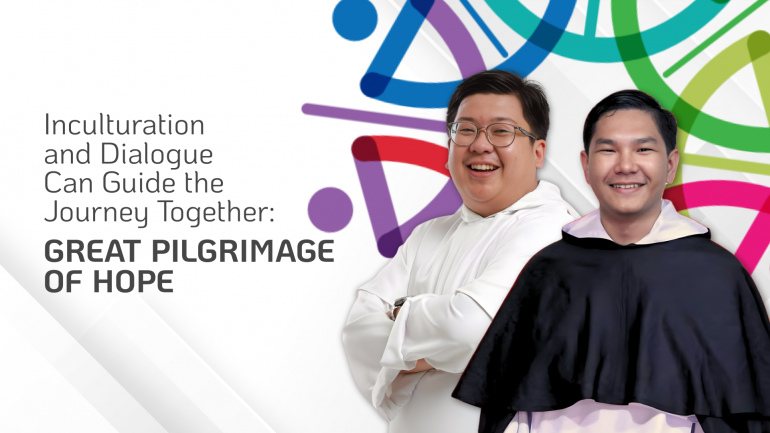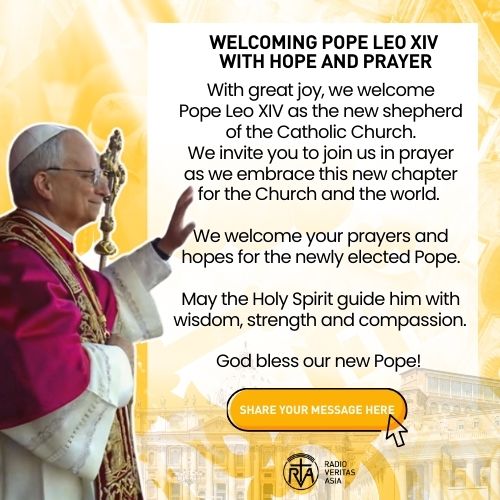Two Indonesian Dominicans Share How Inculturation and Dialogue Can Guide the Journey Together: Great Pilgrimage of Hope

As the Catholic Church in Asia gathers for the Great Pilgrimage of Hope in Penang, Malaysia, from November 27 to 30, one message rises above all: Asia’s diversity is not a challenge, it is a gift. In a continent rich with cultures, languages, and religions, the Church seeks to rediscover how Asian Catholics can live their identity and proclaim the Gospel in a way that resonates with the soul of Asia.
This year's gathering, organized by the Federation of Asian Bishops’ Conferences Office of Evangelization, brings Cardinals, bishops, priests, religious, deacons, and lay leaders together to “journey as peoples of Asia,” inspired by the theme, “Journeying together as peoples of Asia… and they went a different way.” (Mt 2:12)
At the heart of the event lies a profound question: How do we live the Gospel in a uniquely Asian way, faithful, rooted, and culturally alive?
To explore this, RVA spoke with two Indonesian Dominicans, Fray Alexander Darren Everest Ang, OP, and Rev. Fr. Samuel Sonny Gunawan, OP, whose insights reflect the lived reality of Asian Catholic life today.
Faith That Wears the Colors of Culture
Fray Alexander Darren Everest Ang, OP, a third-year Philosophy student, describes how inculturation thrives in Indonesia’s Catholic communities. For him, being Catholic and being Asian are not opposing identities, they enrich one another.
He explains that in many Indonesian parishes, people wear local costumes during Mass, and liturgical songs incorporate traditional melodies. These practices, approved by the bishops’ conference, help Catholics feel that “the liturgy belongs to the people.” He notes an ongoing national movement promoting inculturated Masses across Indonesia.
Similarly, Fr. Samuel Gunawan, OP, who has lived nearly a decade in the Philippines and now serves at the Minor Basilica of Our Lady of the Rosary of Manaoag in Pangasinan, believes that inculturation is the way for the Church to be fully embraced by local communities. With hundreds of tribes and languages in Indonesia, using native music, speech, and art during the liturgy allows Catholics to express their faith in ways that feel familiar and deeply rooted.
“The local culture becomes a venue for evangelization. This is our richness as Catholics. A Mass with local language and music helps the people claim the liturgy as their own,” he says, stressing the importance of seeing one’s identity reflected in worship.
Catechesis Through Language, Education, and Shared Values
Asia is a continent where culture shapes life, and life shapes faith. Fray Alex highlights the importance of using local languages in catechesis. He also points to Asian virtues, such as deep respect for elders, as bridges to Gospel teachings. “Respecting elders is both a cultural practice and a Christian one,” he notes, showing how naturally cultural values can lead people toward Christ.
Fr. Samuel, meanwhile, emphasizes the historical contribution of Catholic education in Indonesia. Many respected Indonesian leaders are alumni of Catholic schools, continuing to carry the values they learned as students. This demonstrates how education rooted in culture and formation leaves a lasting impact.
Living the Faith in a Multi-Religious Asia
Across Asia, Catholics often live side-by-side with Muslims, Buddhists, Hindus, and others. This diversity can pose challenges, but it also opens doors.
Fray Alex explains that in Indonesia’s multi-religious society, interreligious dialogue has become a meaningful pathway toward understanding. “It’s not about deciding which religion is true,” he says, “but about seeing the oneness and uniqueness of God.”
For Fr. Samuel, harmony is expressed in concrete actions. He shares a striking example from Jakarta: the Catholic Cathedral and the Istiqlal Mosque, located side by side, regularly share parking spaces during major religious celebrations. During Christmas or Easter, Catholics use the mosque’s grounds; during major Islamic events, Muslims use the cathedral’s grounds. Such mutual respect builds peaceful coexistence, a true sign of Gospel love lived beyond words.
The Great Pilgrimage of Hope: A Journey Forward for Asia
These lived experiences reflect the mission of the Great Pilgrimage of Hope. In Penang, thousands gather not only to learn or discuss, but to walk together as Asian Catholics, each carrying stories of culture, faith, and hope. The testimonies of Fray Alex and Fr. Samuel embody what this gathering celebrates: a Church that listens, respects cultures, lives harmoniously with others, and finds deeper unity in diversity.
As Asia continues to grow, change, and face new challenges, the Church is reminded that the Gospel is not meant to erase culture but to elevate it. Whether through local liturgical music, education, language, or interreligious harmony, Asian Catholics continue to show that faith is strongest when lived in the beauty of one’s identity.
Indeed, the Great Pilgrimage of Hope invites all of Asia to journey together, and, like the wise men who “went a different way,” to discover new paths where faith and culture meet in the light of Christ.








